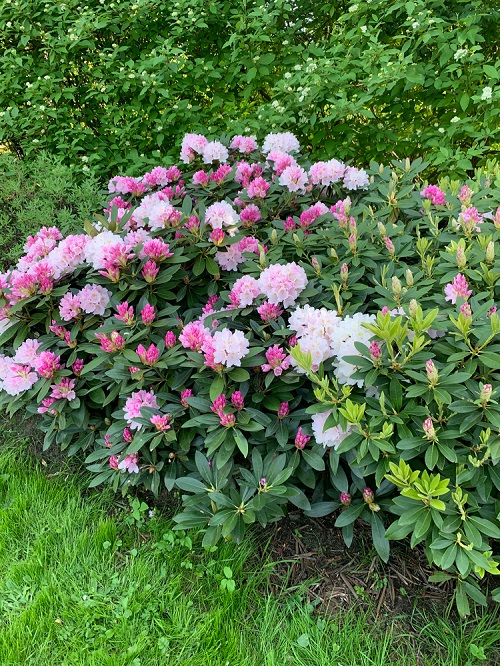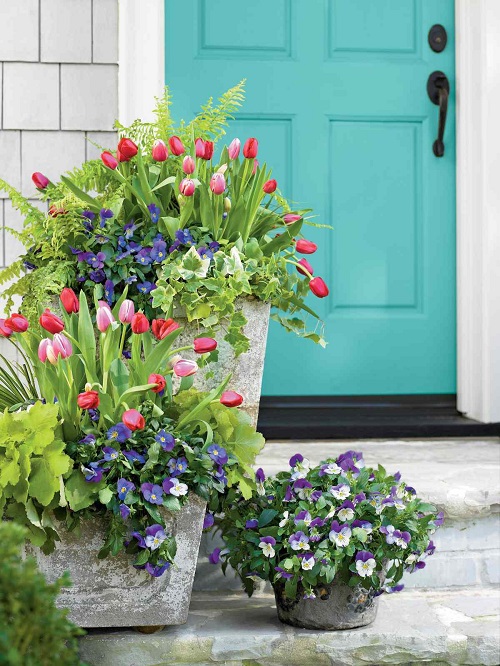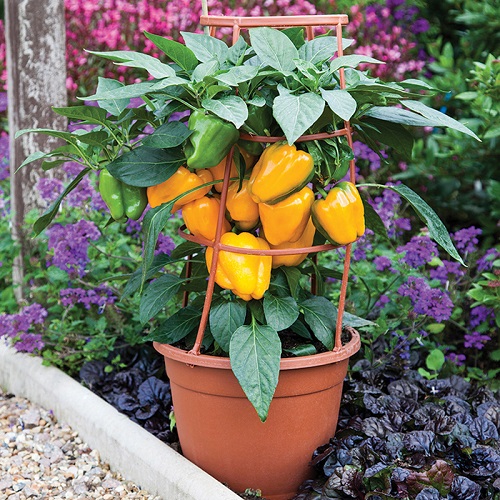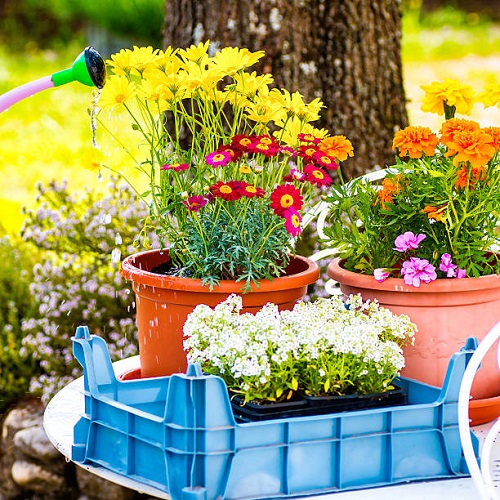Want to know about the best plants according to the Planting Zones of Missouri? Keep on reading to get all the details!
Missouri, situated in the heart of the United States, boasts a range of USDA Hardiness Zones (5 to 7) due to its diverse climate and geographical variations. In this comprehensive guide, you will learn about the planting zones of Missouri, providing local gardeners with valuable insights to make informed decisions for thriving landscapes.
What Exactly are Planting Zones
Planting zones, as defined by the United States Department of Agriculture (USDA), are geographical areas characterized by their average annual minimum temperatures. For Missouri gardeners, understanding the planting zones is akin to having a map that directs them toward planting success.
Want to know what planting zone is Indiana? Find out here
USDA Hardiness Zones in Missouri
Missouri’s varied topography, ranging from the Ozarks to the plains, results in a diverse range of microclimates. These microclimates, in turn, lead to various USDA Hardiness Zones found throughout the state. Here’s a breakdown of the different zones you’ll encounter in Missouri:
- Zone 5a: Encompasses the northern parts of Missouri, including cities like Kansas City. This zone experiences winter temperatures that may plummet from -15°F to -20°F, making it essential to select plants well-suited to these cold conditions.
- Zone 5b: Includes areas near St. Louis, where winters are slightly milder with lows of -10°F to -15°F. While this zone experiences relatively warmer temperatures, it’s still important to consider cold-hardy plant options.
- Zone 6a: Spans central portions of the state, like Springfield, where winter lows average between -5°F to -10°F. This zone offers a longer growing season compared to its northern counterparts discussed above.
- Zone 6b: Covers regions around Jefferson City, where winter temperatures range from 0°F to -5°F. It’s important to take advantage of the more temperate climate in this zone.
- Zone 7a: Includes the southernmost parts of Missouri, like Cape Girardeau. Winter lows average 0°F to 5°F, allowing for a broader range of plant choices.
- Zone 7b: Encompasses a small southeast corner of the state with even warmer winters, averaging 5°F to 10°F. This zone provides opportunities for some subtropical plant selections.
Factors Influencing Missouri’s Planting Zones
Missouri’s diverse climate results from various factors, including elevation, proximity to water bodies, and its position within the continent.
This is why this US state experiences both continental and subtropical influences, leading to temperature extremes and distinct precipitation patterns.
The convergence of these factors creates a unique mosaic of microclimates, each contributing to the overall planting zones found in the state.
Dallas Plant Zones | 37 Best Plants for Dallas
Best Plants for Missouri
Choosing plants that thrive in your Zone is essential for gardening success. Let’s explore some of the options for each zone and provide insights into selecting the ideal plants:
1. Zone 5a
Ideal Plants: Opt for cold-hardy varieties like peonies, Siberian iris, and snowdrops. These plants can withstand the harsh winters in this zone.
2. Zone 5b
Ideal Plants: Consider plants like tulips, daffodils, and hyacinths for their early spring charm. These plants can brighten up your garden as winter transitions into spring.
3. Zone 6a
Ideal Plants: Embrace plants like hostas, astilbes, and hydrangeas that thrive in milder temperatures. These plants enjoy the longer growing season of Zone 6a.
4. Zone 6b
Ideal Plants: Opt for ornamental grasses, daylilies, and phlox to complement this zone’s climate. These plants can add beauty to your garden throughout the growing season.
5. Zone 7a
Ideal Plants: Consider plants like crepe myrtles, camellias, and magnolias that flourish in milder winters. These plants can bring beauty and fragrance to your garden.
6. Zone 7b
Ideal Plants: Choose subtropical plants like citrus trees, palms, and hibiscus that thrive in this warmer zone. These plants can bring a touch of the tropics to your landscape.
Ideal Trees & Shrubs for Missouri’s Planting Zones
When it comes to creating a lush and vibrant landscape, a wide range of plant types can be considered. Here’s a breakdown of ideal plants for each zone, divided into different categories:
1. Trees

- Zone 5a: Choose hardy trees like red maple, white pine, and chinese flame . These trees can withstand the colder temperatures of this zone.
- Zone 5b: Opt for trees such as redbud, dogwood, and sugar maple. These trees add color and beauty to your landscape.
- Zone 6a: Consider trees like oak, maple, and hickory. These trees thrive in the milder temperatures of Zone 6a.
- Zone 6b: Choose trees such as cypress, sweetgum, and cedar. These trees enhance the visual appeal of your garden.
- Zone 7a: Opt for trees like magnolia, southern live oak, and sweetbay magnolia. These trees flourish in the milder winters of Zone 7a.
- Zone 7b: Consider trees such as palm, citrus, and crepe myrtle. These subtropical trees can add an exotic touch to your landscape.
Here are Stunning Trees with Pink Leaves
2. Shrubs
- Zone 5a: Choose shrubs like forsythia, viburnum, and spirea. These shrubs bring early spring color to your garden.
- Zone 5b: Opt for shrubs such as lilac, potentilla, and hydrangea. These shrubs thrive in the slightly warmer temperatures of Zone 5b.
- Zone 6a: Consider shrubs like azalea, boxwood, and weigela. These shrubs add beauty to your landscape throughout the growing season.
- Zone 6b: Choose shrubs such as butterfly bush, ninebark, and rose of Sharon. These shrubs attract pollinators and add charm to your garden.
- Zone 7a: Opt for shrubs like camellia, abelia, and gardenia. These shrubs thrive in the milder winters of Zone 7a.
- Zone 7b: Consider shrubs such as hibiscus, oleander, and tropical hibiscus. These subtropical shrubs can create a tropical oasis in your garden.
3. Perennial Flowers

- Zone 5a: Choose perennials like coneflower, Russian sage, and hosta. These flowers can withstand the colder temperatures of this zone.
- Zone 5b: Opt for perennials such as daylily, iris, and coreopsis. These flowers add color and charm to your garden.
- Zone 6a: Consider perennials like astilbe, phlox, and rudbeckia. These flowers thrive in the milder temperatures of Zone 6a.
- Zone 6b: Choose perennials such as sedum, black-eyed Susan, and bee balm. These flowers attract pollinators and enhance your garden.
- Zone 7a: Opt for perennials like salvia, yarrow, and gaillardia. These flowers flourish in the milder winters of Zone 7a.
- Zone 7b: Consider perennials such as lantana, agapanthus, and canna lily. These subtropical perennials add a burst of color to your landscape.
Best Trailing Perennials for Hanging Baskets & Plant Arrangements
4. Annual Flowers
- Zone 5a: Choose annuals like pansy, snapdragon, and viola. These flowers bring vibrant colors to your garden in early spring.
- Zone 5b: Opt for annuals such as petunia, marigold, and zinnia. These flowers thrive in the warmer temperatures of Zone 5b.
- Zone 6a: Consider annuals like begonia, impatiens, and celosia. These flowers add beauty to your garden throughout the growing season.
- Zone 6b: Choose annuals such as cosmos, sunflowers, and portulacas. These flowers attract pollinators and create a cheerful display.
- Zone 7a: Opt for annuals like geranium, lobelia, and salvia. These flowers thrive in the milder winters of Zone 7a.
- Zone 7b: Consider annuals such as verbena, gazania, and pentas. These subtropical annuals add a tropical flair to your garden.
Vegetable Gardening in Missouri’s Planting Zones
1. Zone 5a
- Early-Season Crops: Consider radishes, peas, and lettuce. These crops can withstand cooler temperatures and even light frost.
- Protection: Use row covers or cloths to protect tender plants from late frosts.
2. Zone 5b

- Cold-Tolerant Greens: Grow spinach, kale, and Swiss chard. These leafy greens thrive in cooler conditions.
- Raised Beds: Create raised beds to enhance soil warmth and drainage.
Growing Swiss Chard in Pots | How to Plant Swiss Chard in Containers
3. Zone 6a
- Warm-Season Favorites: Cultivate tomatoes, peppers, and cucumbers. The extended growing season allows these crops to mature.
- Mulching: Mulch around plants to regulate soil temperature and moisture.
4. Zone 6b
- Heat-Loving Vegetables: Plant beans, corn, and squash. These vegetables appreciate the relatively warmer temperatures of Zone 6b.
- Spacing: Provide proper spacing between plants to ensure adequate airflow and prevent disease.
5. Zone 7a
- Tropical Delights: Embrace warm-season crops like tomatoes, peppers, and okra. The longer growing season in Zone 7a allows these plants to thrive.
- Irrigation: Implement proper irrigation to ensure consistent moisture, especially during the warmer months.
6. Zone 7b
- Subtropical Selections: Focus on subtropical vegetables such as peppers, sweet potatoes, and melons. These crops revel in the prolonged warmth of Zone 7b.
- Shading: Provide shading for your plants during the intense summer heat to prevent stress.
Tips for Gardening Success in Missouri
Achieving gardening success in Missouri’s varied planting zones requires careful planning and attentive care. Here are some tips to enhance your gardening endeavors:
- Know Your Zone: Determine your precise USDA Hardiness Zone to choose plants that thrive in your unique climate.
- Microclimates Matter: Understand the microclimates within your garden space. Urban heat islands and water bodies can create localized temperature variations.
- Timing is Key: Follow local planting calendars tailored to your zone. Proper timing can greatly impact your gardening success.
- Mulching Magic: Apply mulch around plants to regulate soil temperature, retain moisture, and prevent weed growth.
- Smart Watering: Adapt your watering routine based on your zone’s climate. Water deeply and less frequently to encourage strong root systems.
- Soil Care: Invest in soil health through proper amendments and mulching. Healthy soil promotes vigorous plant growth.
- Companion Planting: Explore companion planting techniques that utilize plants’ natural interactions to improve pest control and nutrient absorption.
- Pest Management: Learn about common pests and diseases in your zone. Implement integrated pest management strategies for effective control.
40 Best Organic Pest Control Approaches Every Gardener Should Know
Planting Zones in Missouri – Conclusion
Understanding the intricate web of planting zones in Missouri equips gardeners with the knowledge needed to curate thriving landscapes. Each zone presents a unique set of climatic conditions, influencing plant selection and care strategies.
Whether you’re a gardening enthusiast, a beginner, or an experienced horticulturist, the planting zones guide your journey toward creating beautiful, resilient, and bountiful gardens.








